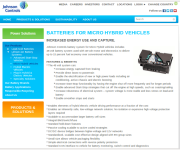arkmundi
10 MW
A123 Shifts Away From EV Battery Packs In US
Interesting that WG is also bringing the Fisker out of bankruptcy. For the moment, however...A123′s parent company, Wanxiang Group, also owns the now defunct electric carmaker Fisker. Under its newly named Elux brand, the company wants to revive the all-electric Karma and will need large battery packs.
Meaning..Battery maker A123 Systems has announced it will be moving away from producing lithium ion batteries for U.S. market electric cars.
Instead, said CEO Jason Forcier, the company’s automotive efforts will concentrate on more commonplace and potentially profitable batteries for starter batteries and so-called microhybrids.
“We won’t spend too much effort on the EV markets in Europe or the U.S., because we don’t see them as viable markets in the next 10 years,” Forcier said..
Which in my mind is perfect for the LEV & eBike hobbyist market. 12-volt is a a great form factor as it can easily be made into 36 & 48 volt packs. Expect the new 14ah prismatic form factor is for that. Seems that A123 is doing good.The next core product will be small lithium-ion batteries for the U.S. market. By 2017 or 2018, A123 wants to begin building 12-volt batteries for microhybrids. With start/stop systems and storage only for regenerative braking, microhybrid batteries are smaller


